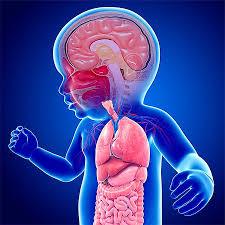Infant and Child Health
which long-term changes are made in the neocortex and as a mechanism for maintaining sleep. Sleep spindles have also been associated with different aspects of cognitive performance in healthy children.
Evaluation of innovative digital monitoring devices in neonates
Sleep disordered breathing (SDB), is a very common condition in children, and has been associated with neurocognitive deficits. To date, it is not known whether the poor neurocognition in children with SDB is related to a loss of sleep spindles. This study will investigate sleep spindles in children with SDB and determine if there is an association between sleep spindle numbers and neurocognitive deficits. The student will be involved in conducting sleep studies (polysomnography) and analysis of electroencephalography data.
Suitability: BMedSc (Hons) Location: Department of Paediatrics, Level 5 Monash Children’s Hospital Project Leaders: A/Prof Atul Malhotra. Dr Faezeh Marzbanrad Email: atul.malhotra@monash.edu Project description: Opportunities exist to be involved in this exciting project on innovative digital monitoring devices for neonates. The project will involve evaluation of new devices being developed for neonatal cardiorespiratory and other monitoring. Project will include patient recruitment, data recording, collection, and analysis. Computer assisted analysis with follow acquisition of electronic signals. This project is in collaboration with Monash Engineers. Keywords: Newborn, digital, electronic device
Ensuring integrity in neonatal evidencebased medicine Suitability: BMedSc (Hons) Location: Department of Paediatrics, Level 5 Monash Children’s Hospital Project Leaders: A/Prof Atul Malhotra. Prof Ben Mol Email: atul.malhotra@monash.edu Project description: Randomised controlled trials are the most important way in which evidence is collected for new therapies or re-purposed therapies or management strategies in medicine. These contribute to systematic reviews and practice changing guidelines if done well. We rely on research integrity, quality, and transparency of data. In this project, students will systematically review, collect data on doubtful or spurious studies and learn methods to analyse, report and ensure integrity in literature. Keywords: RCTs, neonate, integrity, fake, fraudulent research
Are Sleep Spindles Associated with Neurocognitive Deficits in Children with Sleep Disordered Breathing? Suitability: Honours/PhD/Masters Location: Department of Paediatrics, Level 5 Monash Children’s Hospital Project Leaders: Prof Rosemary Horne Email: rosemary.horne@monash.edu Phone: 8572 2827 Project description: A particular phenomenon of the electroencephalography (EEG) wave form is the sleep spindle, believed to function as mechanism through The Ritchie Centre | Student Research Projects 2023
Bad sleep is bad for your cardiovascular health Suitability: Honours/PhD/Masters Location: Department of Paediatrics, Level 5 Monash Children’s Hospital Project Leaders: Prof Rosemary Horne, Dr Lisa Walter Email: rosemary.horne@monash.edu Phone: 8572 2827 Project description: The research of my group focuses on sleep in infants and children. This is of the utmost importance to the health of every baby and child. Sleep is the primary activity of the brain during early development. By the age of 2 years a child has spent a total of 13 months sleeping! Between 2 and 5 years of age children spend equal amounts of time asleep as awake. A common cause of sleep disruption in childhood is partial or complete upper airway obstruction, termed sleep disordered breathing, with the hallmark feature being snoring. The repetitive airway obstruction leads to intermittent periods of hypoxia, with perhaps even more damaging rapid re-oxygenation after release of the obstruction, which is known to lead to brain injury. Repetitive events also cause surges in blood pressure, which leads to hypertension. In this project we will examine the effects of sleep disordered breathing on vascular stiffness. Vascular stiffness reflects the compliance of the large conductance vessels and is an important contributor to increased cardiac stress and a risk factor for adverse cardiovascular events. It is a non-invasive method of assessing vascular dysfunction. Students will be involved in analysing the physiological data collected during overnight clinical sleep studies and will have the opportunity to participate in these in the brand-new Melbourne 21








